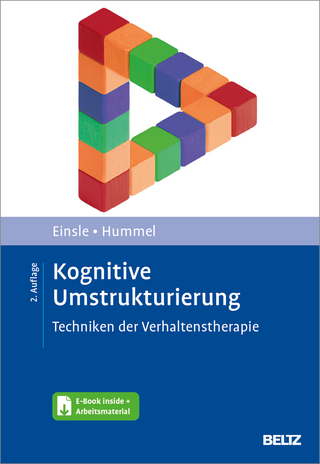
The Cambridge Handbook of Human Affective Neuroscience
Cambridge University Press (Verlag)
978-0-521-17155-7 (ISBN)
Neuroscientific research on emotion has developed dramatically over the past decade. The cognitive neuroscience of human emotion, which has emerged as the new and thriving area of 'affective neuroscience', is rapidly rendering existing overviews of the field obsolete. This handbook provides a comprehensive, up-to-date and authoritative survey of knowledge and topics investigated in this cutting-edge field. It covers a range of topics, from face and voice perception to pain and music, as well as social behaviors and decision making. The book considers and interrogates multiple research methods, among them brain imaging and physiology measurements, as well as methods used to evaluate behavior and genetics. Editors Jorge Armony and Patrik Vuilleumier have enlisted well-known and active researchers from more than twenty institutions across three continents, bringing geographic as well as methodological breadth to the collection. This timely volume will become a key reference work for researchers and students in the growing field of neuroscience.
Jorge Armony holds the Canada Research Chair in Affective Neuroscience in the Department of Psychiatry at McGill University. He is also a researcher at the Douglas Mental Health University Institute and a member of the International Laboratory for Brain, Music, and Sound Research. Dr Armony's research focuses on the neural mechanisms of emotional processing across modalities, including the interactions of these mechanisms with other cognitive functions in healthy individuals as well as in patients suffering from psychiatric and neurological disorders. Patrik Vuilleumier is a professor at the University of Geneva Medical School, where he leads the Laboratory for Neurology and Imaging of Cognition and directs the Geneva Neuroscience Center. Dr Vuilleumier was part of the interdisciplinary team that helped to shape the Swiss National Center of Competence in Research in Affective Sciences. Dr Vuilleumier's research focuses on the influence of emotion processing on perception, attention and action, using functional neuroimaging techniques and neuropsychological studies of brain-damaged patients.
Part I. Introduction to Human Affective Neuroscience: 1. Models of emotion: the affective neuroscience approach David Sander; Part II. Measuring Emotional Responses: 2. Objective and subjective measurements in affective science Katherine Gardhouse and Adam K. Anderson; 3. A two-way road: efferent and afferent pathways of automatic activity in emotion Neil A. Harrison, Sylvia D. Kreibig and Hugo D. Critchley; 4. Electro- and magneto-encephalography in the study of emotion Andreas Keil; 5. PET and fMRI: basic principles and applications in affective neuroscience research Jorge Armony and Jung Eun Han; 6. Lesion studies in affective neuroscience Lesley Fellows; Part III. Emotion Perception and Elicitation: 7. The facial expression of emotions Nathalie George; 8. Bodily expressions of emotion: visual cues and neural mechanisms Anthony P. Atkinson; 9. Pain and the emotional responses to noxious stimuli Pierre Rainville; 10. Examining emotion perception and elicitation via olfaction Aprajita Mohanty and Jay A. Gottfried; 11. Emotional voices: the tone of (true) feelings Caroline Bruck, Benjamin Kreifelts, Thomas Ethofer and Dirk Wildgruber; 12. Emotion and music Stefan Koelsch; 13. Love letters and hate mail: cerebral processing of emotional language content Johanna Kissler; Part IV. Cognitive-Emotion Interactions: 14. Affective biases in attention and perception Judith Dominguez-Borras and Patrick Vuilleumier; 15. Top-down attention and the processing of emotional stimuli Luiz Pessoa, Leticia Oliverira and Mirtes Pereira; 16. Emotion regulation K. Luan Phan and Chandra Sekhar Sripada; 17. Neural mechanisms underlying value-based decision-making John P. Doherty; Part V. Emotional Learning and Memory: 18. Neural basis of human fear learning Joseph E. Dunsmoor and Kevin S. LaBar; 19. Reward learning: contributions of cortibasal ganglia circuits to reward-value signals Dominic S. Fareri and Mauricio R. Delgado; 20. Emotion in episodic memory: the effects of emotional content, emotional state, and motivational goals Alisha C. Holland and Elizabeth A. Kensinger; Part VI. Social Emotions: 21. Moral emotions Roland Zahn, Ricardo de Oliveira-Souza and Jorge Moll; 22. Social stress and social approach Markus Heinrichs, Frances S. Chen, Gregor Domes and Robert Kumsta; 23. Empathy from the perspective of social neuroscience Olga Klimecki and Tania Singer; Part VII. Individual Differences in Emotion: 24. Trait anxiety, neuroticism, and the brain basis of vulnerability to affective disorders Sonia Bishop and Sophie Forster; 25. Mapping neurogenetic mechanisms of individual differences in affect Ahmad A. Hariri; 26. Sex differences in emotion Annett Schirmer; 27. Development of affective circuitry Essi Viding, Catherine L. Sebastian and Eamon J. McCrory; 28. Emotion and aging: linking neural mechanisms to psychological theory Peggy L. St Jacques, Amy Winecoff and Roberto Cabeza.
| Zusatzinfo | 5 Tables, unspecified; 19 Plates, color; 33 Halftones, unspecified; 43 Line drawings, unspecified |
|---|---|
| Verlagsort | Cambridge |
| Sprache | englisch |
| Maße | 178 x 253 mm |
| Gewicht | 1290 g |
| Themenwelt | Geisteswissenschaften ► Psychologie ► Allgemeine Psychologie |
| Geisteswissenschaften ► Psychologie ► Biopsychologie / Neurowissenschaften | |
| Geisteswissenschaften ► Psychologie ► Verhaltenstherapie | |
| Naturwissenschaften ► Biologie ► Zoologie | |
| ISBN-10 | 0-521-17155-5 / 0521171555 |
| ISBN-13 | 978-0-521-17155-7 / 9780521171557 |
| Zustand | Neuware |
| Haben Sie eine Frage zum Produkt? |
aus dem Bereich


